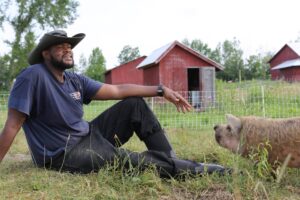Precision agriculture company Raven Industries has acquired Smart Ag, a driverless tractor technology, and the majority of autonomous farm equipment manufacturer Dot Technology Corp. The terms of the acquisitions were not disclosed.
SmartAg retrofits farmers’ existing machinery with driverless technology.
“We were looking for partnership opportunities and we knew that what we had built would be complemented by other existing tech in the market,” Smart Ag founder and CEO Colin Hurd told AFN. “For what we do, the industry is relatively small, so basically everybody knows everybody. Raven has a lot of existing technology that is really beneficial to our platform in terms of guidance systems, steering systems, rate control, and things like that.”
Ag Smart and Raven Industries communicated for about a year before decided that M&A was the right route to bring both company’s innovations under the same roof. Hurd also realized that as an investor-funded company, it needed to provide a return to its investors while lining up the next infusion of capital. SmartAg was the first startup to receive investment from the Iowa-based Ag Startup Engine. Stine Seed, the biotechnology firm that offers genetics, biotechnology, and agronomy for corn and soybean seed, was another investor in Smart Ag.
Located in the Iowa State University Research Park, Ag Startup Engine aims to simplify and accelerate the idea to commercialization process for high-performing agtech entrepreneurs and companies. It has invested in 11 companies to date.
“We really couldn’t have done it without them,” Hurd says in reference to Ag Startup Engine. “They were the first money in. ASE is designed to address the gap between the idea stage and seed stage. It seemed that in an area like ours, there was a challenge for a person wanting to start a company with a good idea to get any traction from the funding standpoint. ASE provided the capital and allowed us to build our MVP in the first year.”
As part of the acquisition, Raven is launching ‘Smart Ag powered by Raven Autonomy,’ which will be a growth platform for the agriculture division of Raven.
“It’s focused purely on enabling autonomy across a lot of different applications and platforms while bringing commercial solutions to the market like the retrofits that our current system offers while also enabling and supporting OEM partners in their goal to get to fully autonomous operations as well,” Hurd explains.
Raven Industries is making a bullish effort to claim a large swath of the autonomous ag space. Last week, it announced that it acquired majority ownership in autonomous farm equipment developer Dot Technology Corp.
The brainchild of Norwegian inventor Norbert Beaujot, Dot is a U-shaped, full-sized farming robot. The diesel-powered hydraulic platform packed with sensors and data processing capabilities to provide automation and it’s equipped with seeding implements but can also be paired with other Dot-ready attachments like fertilizer sprayers and grain carts. Dot is commercially available and a few units had already been sold to Saskatchewan farmers as of May when AFN spoke to company CEO Robert Saik.
“I think the biggest difference between Dot and most of what you see for robotics in agriculture is that DOT is big. It’s about pure scale. Most of what you see in agriculture robotics are small scale robots. This is a full-fledged, full-sized, autonomous robot for broadacre agriculture,” Saik told AFN at the time. “One of the things we struggle with when we talk to people about Dot is that they don’t realize the size of the robot. For instance, the Dot Ready Connect sprayer by Pattison is 1,600 gallons with 120-foot booms. The DOT Ready Seed Master air seeder is 300 bushels and is 30 feet wide. This is full-size farm equipment”
Smart Ag and Dot may seem like competing outfits, but their concepts are actually quite complementary, according to Hurd. Moving the needle in the autonomous arena will likely require providing so-called ‘aftermarket’ solutions like the ones Smart Ag has developed to retrofit the equipment farmers already own. New turnkey autonomous equipment solutions may sound like the right path, but many farmers can’t afford to overhaul their entire inventory of equipment for new and more expensive versions.
“This is one of the most significant steps toward autonomy. We’ve seen lots of buzz and talk but what’s special about us coming together with Raven and Dot is that we are consolidating forces,” he says. “We are probably one of the most experienced startup companies tech-wise and Dot has an extremely innovative platform and approach. Raven brings a huge amount of sales support and additional supporting tech to the equation.”
Perhaps part of the reason that Hurd defines autonomous farming as a small club is due to the Everest-size challenges the ag robotics space faces, including making autonomous vehicles safe, able to communicate in regions with unreliable internet, and synching them with other crucial pieces of equipment.
“There are a lot of folks working on this, which is exciting to me. We can support that a lot better now being part of Raven by supporting other companies in trying to figure this out and leveraging that.”




